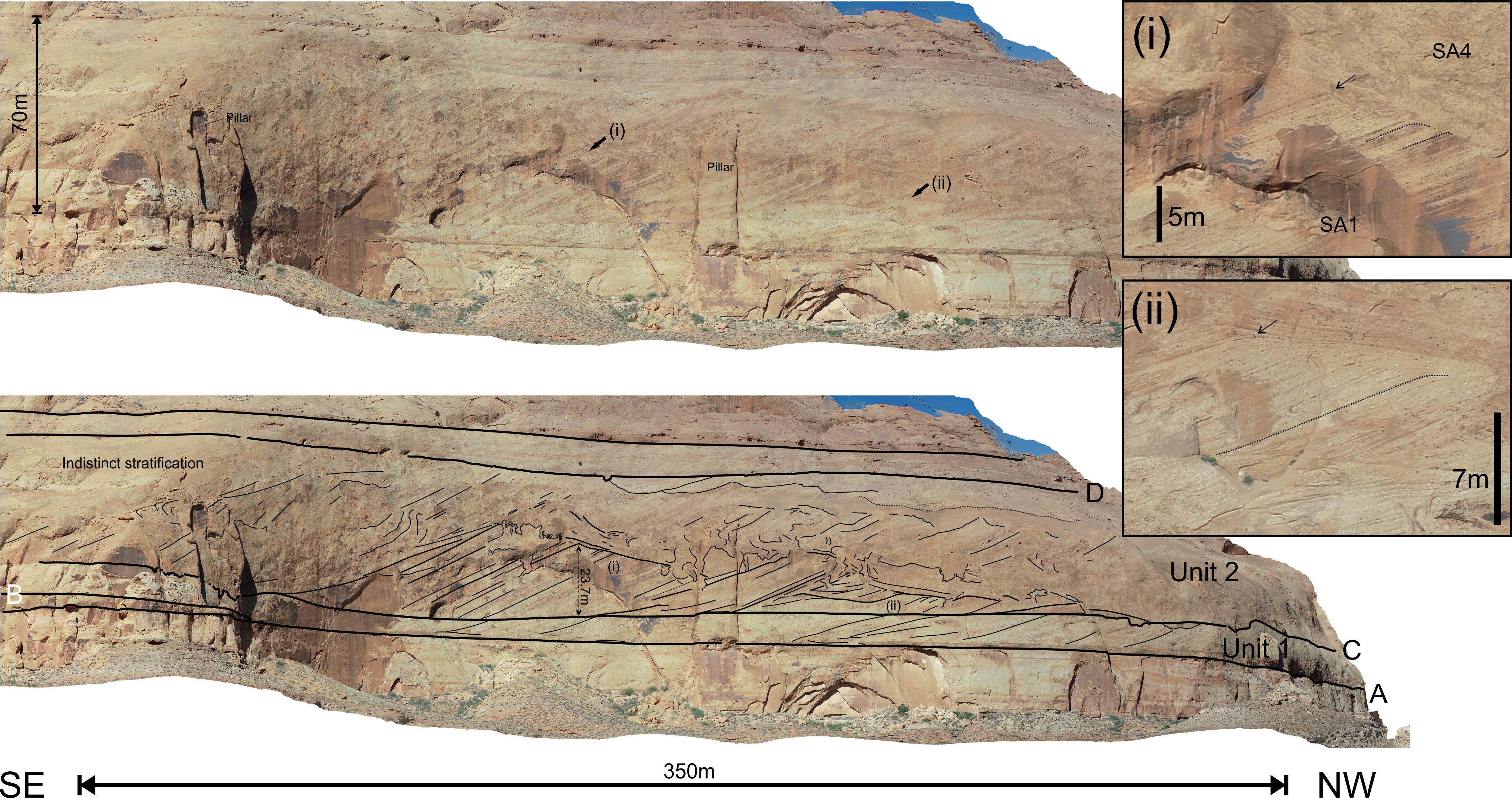David Patrick Cousins
Sediment deposition and preservation in Aeolian Systems: A comparison of contemporary and ancient ergs
Cousins, David Patrick
Authors
Contributors
Stuart Clarke
Supervisor
Abstract
Ancient and contemporary aeolian systems have been subject of important conceptual advances in recent years, however, a disconnect exists between the complexities inherent at the depositional surface and subsequent controls on preservation. At the fundamental level, the depositional environment consists of dune-fields, and the rock record is a stratigraphic architecture consisting of cross-strata and bounding surfaces. Vast outcrops of ancient aeolian strata display huge amounts of temporal variation manifest through dune-field evolution while the sedimentary record of contemporary ergs remain largely unknown. In order to bridge these gaps this research utilises a range of digitally based systems and techniques to analyse spatial data in order to unravel contemporary and ancient system evolutions. The study utilised the Wahiba Sand Sea of Oman and the Jurassic Navajo Sandstone of western USA as contemporary and ancient analogues respectively. Analysis of high to medium-resolution satellite and geophysical datasets demonstrate that antecedent topography has been a dominating allogenic boundary condition during the formation and growth of large linear bedforms in the Wahiba Erg. There appears to be a hierarchy of autogenic processes influenced by antecedent topography that imparts a uniqueness to the emergent dune-field pattern. The production of large-scale virtual outcrop models permitted broad spatial analysis of three sites across the Navajo Sandstone which represent marginal through central erg settings. Results show unique allogenic controls relating to system architectures at each outcrop, some of which provide validations to hypotheses made from observations within the contemporary analogue. The research demonstrates that in extracting signals of allogenic boundary conditions within which autogenic system processes evolved is the basis for the interpretation of geomorphic landforms and their stratigraphic record. The analogues represent a point on a spectrum of preservations styles recently detected in aeolian systems and provide additional examples with which to advance our knowledge.
| Thesis Type | Thesis |
|---|---|
| Publicly Available Date | May 26, 2023 |
| Award Date | 2020-06 |
Files
CousinsPhD2020A1_GPRprocessing.xlsx
(16 Kb)
Spreadsheet
CousinsPhD2020A5_Fig10.26_Complex2inputparameters.xlsx
(18 Kb)
Spreadsheet
CousinsPhD2020A2_sedimentarylogs.pdf
(966 Kb)
PDF
CousinsPhD2020A3_Fig10.16.jpg
(7.3 Mb)
Image
CousinsPhD2020.pdf
(100 Mb)
PDF
CousinsPhD2020A4_Fig10.21.pdf
(58.2 Mb)
PDF
Downloadable Citations
About Keele Repository
Administrator e-mail: research.openaccess@keele.ac.uk
This application uses the following open-source libraries:
SheetJS Community Edition
Apache License Version 2.0 (http://www.apache.org/licenses/)
PDF.js
Apache License Version 2.0 (http://www.apache.org/licenses/)
Font Awesome
SIL OFL 1.1 (http://scripts.sil.org/OFL)
MIT License (http://opensource.org/licenses/mit-license.html)
CC BY 3.0 ( http://creativecommons.org/licenses/by/3.0/)
Powered by Worktribe © 2024
Advanced Search

